Beet container gardening: it’s easier than you think! Imagine plucking vibrant, earthy beets straight from your patio, ready to roast, pickle, or toss into a refreshing salad. Sounds dreamy, right? Well, it doesn’t have to be just a dream! For centuries, humans have cultivated beets, tracing their roots back to ancient Mediterranean civilizations where they were initially valued for their leafy greens rather than their bulbous roots. Now, we appreciate both!
But let’s face it, not everyone has the luxury of sprawling gardens. That’s where the magic of container gardening comes in. I’m here to tell you that even with limited space, you can enjoy the satisfaction of growing your own delicious beets. This DIY guide is packed with simple tricks and hacks that will transform your balcony, porch, or even a sunny windowsill into a thriving beet haven.
Why should you bother with beet container gardening? Because fresh, homegrown beets taste infinitely better than anything you’ll find at the grocery store. Plus, it’s a fantastic way to connect with nature, reduce your carbon footprint, and impress your friends with your green thumb (even if it’s a secretly easy process!). So, grab your gardening gloves, and let’s get started on this exciting journey of growing beets in containers!
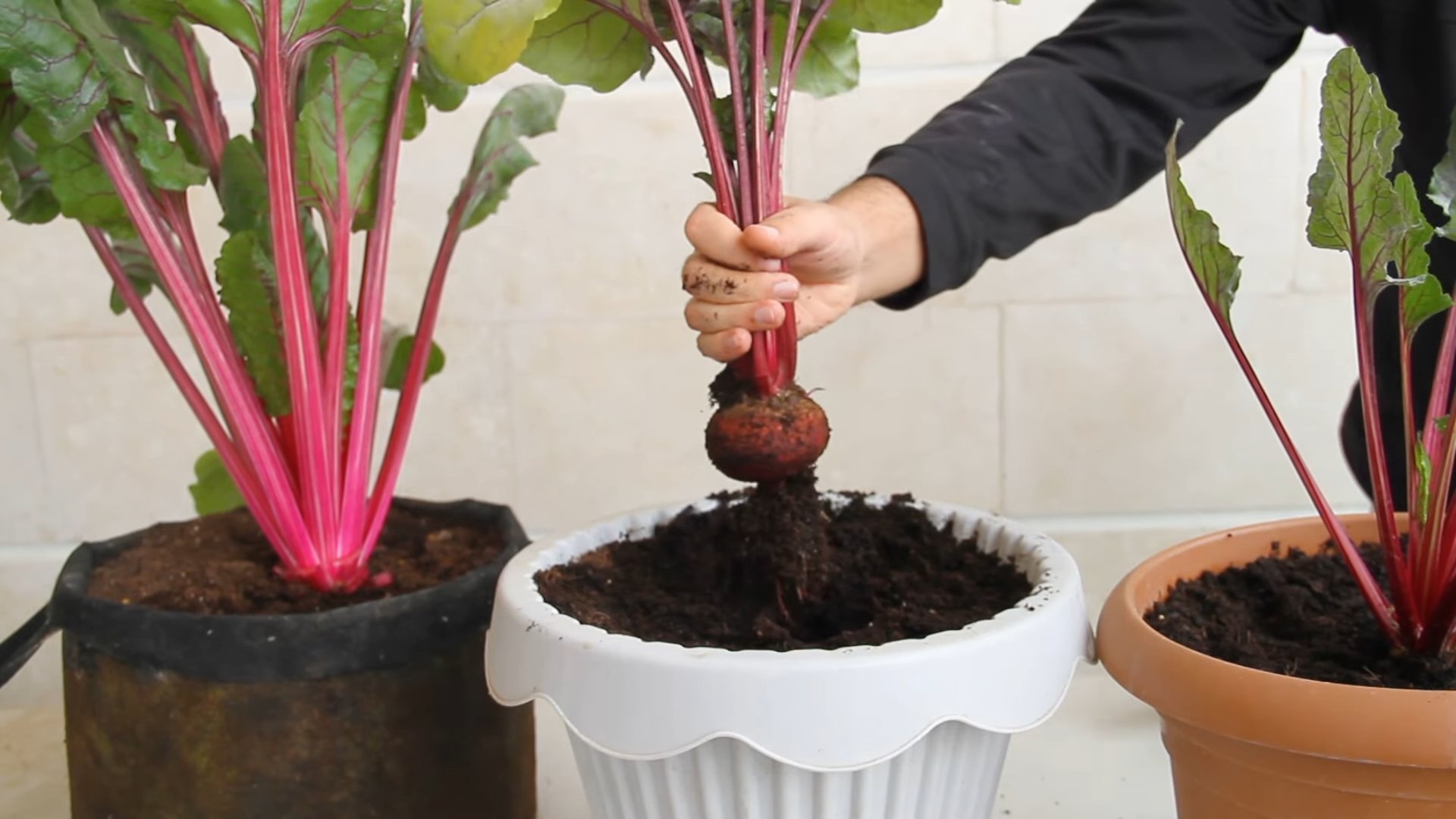
Grow Your Own Sweet Beets in Containers: A Beginner’s Guide
Hey there, fellow gardening enthusiasts! Ever thought about growing beets but felt limited by space? Well, I’m here to tell you that container gardening is your answer! Beets are surprisingly easy to grow in pots, and the satisfaction of harvesting your own earthy, sweet roots is truly rewarding. Plus, you get to enjoy the delicious beet greens too! Let’s dive into how you can cultivate a thriving beet crop right on your patio, balcony, or even windowsill.
Choosing the Right Container and Soil
First things first, we need to set the stage for our beet babies. The right container and soil are crucial for their success.
* Container Size: Beets need room to grow downwards, so opt for a container that’s at least 12 inches deep and 12 inches wide. A larger container is always better, especially if you plan on growing multiple beets together. I personally love using large resin pots because they’re lightweight and durable.
* Drainage: This is non-negotiable! Make sure your container has drainage holes. Beets hate soggy feet, and poor drainage can lead to root rot. If your container doesn’t have enough holes, you can easily drill a few more.
* Soil: Forget garden soil! It’s too heavy and compacts easily in containers. Instead, use a high-quality potting mix. Look for a mix that’s well-draining and contains ingredients like peat moss, perlite, or vermiculite. I often amend my potting mix with compost for added nutrients and improved drainage.
Planting Your Beet Seeds
Now for the fun part – planting!
1. Prepare the Soil: Fill your container with the potting mix, leaving about an inch or two of space at the top. Gently pat down the soil to remove any air pockets.
2. Sow the Seeds: Beet seeds are actually clusters of seeds, so you’ll likely get multiple seedlings sprouting from each one. Sow the seeds about 1 inch deep and 2-3 inches apart. If you’re using a larger container, you can space them further apart.
3. Cover and Water: Cover the seeds with a thin layer of potting mix and gently water the soil until it’s evenly moist. Avoid overwatering, as this can cause the seeds to rot.
4. Location, Location, Location: Place your container in a spot that receives at least 6 hours of sunlight per day. Beets love sunshine! If you’re growing them indoors, a sunny windowsill or grow lights will do the trick.
5. Patience is Key: Beets typically take about 5-10 days to germinate, so don’t get discouraged if you don’t see sprouts right away. Keep the soil consistently moist during this time.
Caring for Your Beet Plants
Once your beet seedlings emerge, it’s time to provide them with the care they need to thrive.
* Thinning: As I mentioned earlier, beet seeds are clusters, so you’ll need to thin out the seedlings to give them enough space to grow. Once the seedlings are a few inches tall, carefully snip off the weaker ones at the soil level, leaving the strongest seedling in each spot. This might feel brutal, but it’s essential for healthy beet development.
* Watering: Beets need consistent moisture, but they don’t like to be waterlogged. Water deeply whenever the top inch of soil feels dry to the touch. Avoid overhead watering, as this can lead to fungal diseases.
* Fertilizing: Beets are heavy feeders, so they’ll benefit from regular fertilization. Use a balanced liquid fertilizer diluted to half strength every 2-3 weeks. I like to use a fertilizer that’s specifically formulated for vegetables.
* Weeding: Keep your container free of weeds, as they can compete with your beets for nutrients and water. Gently pull out any weeds that pop up.
* Pest Control: Beets are generally pest-resistant, but they can occasionally be bothered by aphids or flea beetles. If you notice any pests, you can try spraying them with insecticidal soap or neem oil. I prefer organic pest control methods whenever possible.
Harvesting Your Beets
The moment you’ve been waiting for – harvest time!
1. Timing is Everything: Beets are typically ready to harvest about 50-70 days after planting, depending on the variety. You can harvest them at any size, but they’re usually best when they’re about 2-3 inches in diameter.
2. Check the Shoulders: The easiest way to tell if your beets are ready is to check the “shoulders” – the part of the beet that’s visible above the soil. If they’re starting to peek out and look plump, it’s probably time to harvest.
3. Gentle Extraction: Gently loosen the soil around the beet with a trowel or hand fork. Then, grasp the beet greens near the base and pull upwards with a gentle, twisting motion. If the beet is stubborn, you may need to loosen the soil a bit more.
4. Don’t Forget the Greens: Beet greens are delicious and nutritious! You can harvest them at any time during the growing season. Simply snip off a few of the outer leaves, leaving the inner leaves to continue growing.
5. Storage: Store your harvested beets in the refrigerator for up to a few weeks. Remove the greens before storing, as they can draw moisture from the roots.
Troubleshooting Common Beet Problems
Even with the best care, you might encounter a few challenges along the way. Here are some common beet problems and how to address them:
* Poor Germination: If your beet seeds aren’t germinating, it could be due to several factors, such as old seeds, cold soil, or overwatering. Make sure you’re using fresh seeds, and keep the soil consistently moist but not waterlogged.
* Leggy Seedlings: Leggy seedlings are tall and spindly, and they’re often a sign of insufficient light. Move your container to a sunnier location or provide supplemental lighting.
* Root Rot: Root rot is caused by overwatering and poor drainage. Make sure your container has drainage holes, and avoid watering too frequently.
* Leaf Spot: Leaf spot is a fungal disease that can cause brown or black spots on the leaves. Improve air circulation around your plants and avoid overhead watering. You can also try spraying with a fungicide.
* Bolting: Bolting is when beets prematurely flower and go to seed. This can be caused by stress, such as extreme temperatures or inconsistent watering. Try to provide your beets with consistent growing conditions.
Choosing the Right Beet Variety for Containers
Not all beet varieties are created equal when it comes to container gardening. Some are better suited for pots than others. Here are a few of my favorites:
* ‘Baby Beet’: As the name suggests, this variety produces small, round beets that are perfect for containers. They mature quickly and are very tender.
* ‘Early Wonder’: This is a classic beet variety that’s known for its early maturity and excellent flavor. It produces medium-sized, round beets.
* ‘Detroit Dark Red’: This is another popular beet variety that’s reliable and easy to grow. It produces large, round beets with a deep red color.
* ‘Golden Beet’: If you’re looking for something a little different, try growing golden beets. They have a milder flavor than red beets and a beautiful golden color.
* ‘Chioggia’: This Italian heirloom beet is known for its beautiful concentric rings of red and white. It’s a bit more challenging to grow than other varieties, but the unique appearance is worth the effort.
Maximizing Your Beet Harvest
Want to get the most out of your container beet garden? Here are a few tips to help you maximize your harvest:
* Succession Planting: Sow a new batch of beet seeds every 2-3 weeks to ensure a continuous harvest throughout the growing season.
* Companion Planting: Plant beets alongside other vegetables that can benefit them, such as onions, garlic, and lettuce.
* Mulching: Apply a layer of mulch around your beet plants to help retain moisture, suppress weeds, and regulate soil temperature.
* Harvesting Greens Regularly: Don’t be afraid to harvest beet greens regularly. This will encourage the plants to produce more roots.
* Rotating Your Crops: If you’re growing beets in the same container year after year, be sure to rotate your crops to prevent soilborne diseases.
Creative Ways to Use Your Homegrown Beets
Now that you’ve harvested your beautiful beets, it’s time to get creative in the kitchen! Here are a few of my favorite ways to use homegrown beets:
* Roasted Beets: Roasting beets brings out their natural sweetness. Simply toss them with olive oil, salt, and pepper, and roast them in the oven until tender.
* Beet
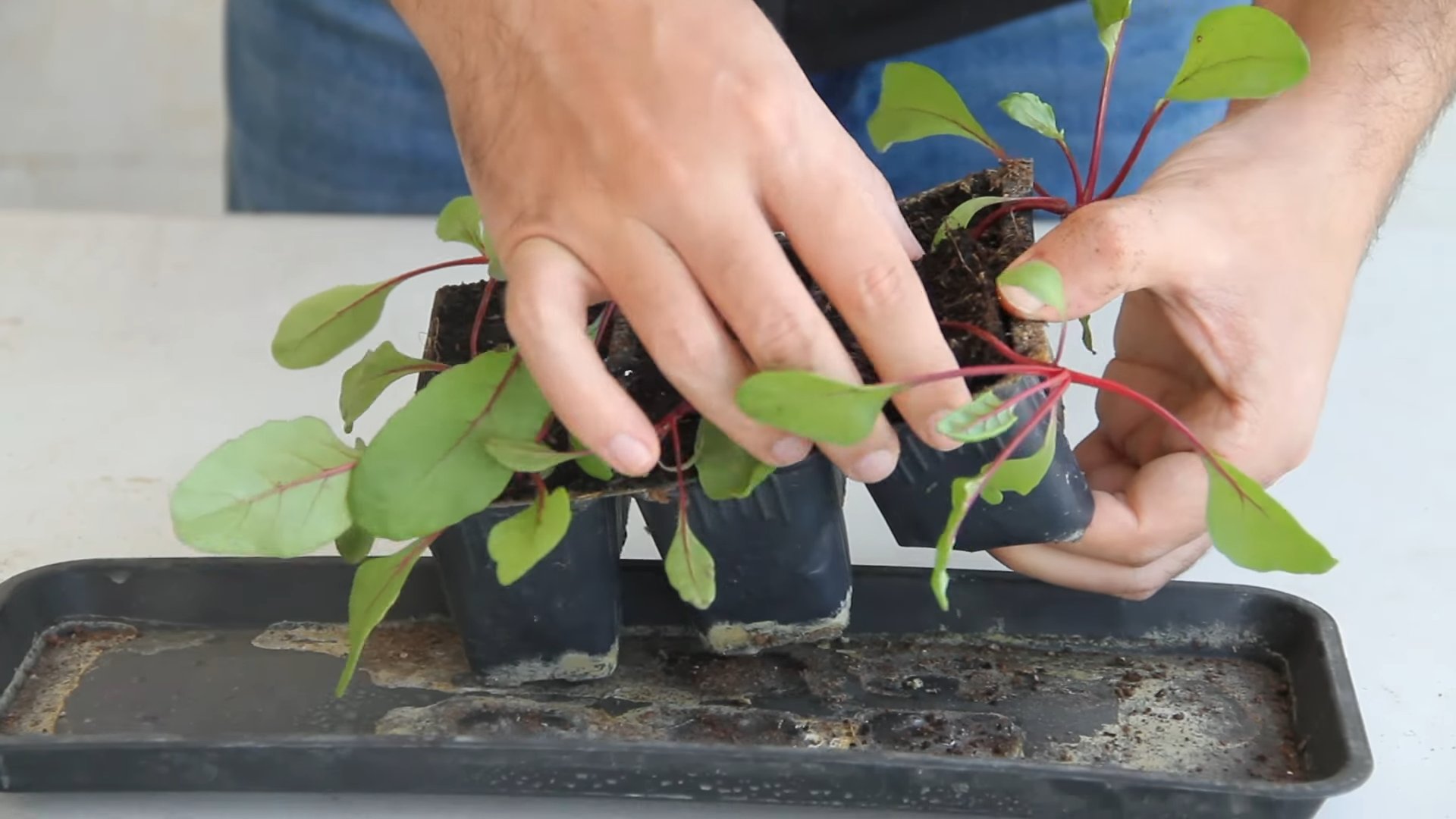
Conclusion
So, there you have it! Embracing beet container gardening is more than just a trendy gardening experiment; it’s a gateway to fresh, flavorful beets right at your fingertips, regardless of your space constraints. We’ve walked through the simple steps, from selecting the right container and soil to nurturing your beet plants to a bountiful harvest. The beauty of this method lies in its accessibility and the sheer satisfaction of growing your own food.
Why is this a must-try? Because it democratizes gardening. No sprawling acreage is required, no back-breaking labor is necessary. Just a sunny spot, a suitable container, and a little bit of love. Imagine the joy of plucking vibrant, ruby-red beets from your own container, knowing exactly where they came from and what went into their growth. Think of the delicious meals you can create – roasted beets with goat cheese, beet salads with walnuts and balsamic glaze, or even beet greens sautéed with garlic and olive oil. The possibilities are endless!
But the benefits extend beyond the culinary. Container gardening, in general, is therapeutic. It’s a chance to connect with nature, to slow down, and to nurture something from seed to harvest. It’s a mindful activity that can reduce stress and improve your overall well-being. And when you choose to grow beets, you’re also adding a nutritional powerhouse to your diet. Beets are packed with vitamins, minerals, and antioxidants, making them a healthy and delicious addition to any meal.
Looking for variations? Consider companion planting. Marigolds can help deter pests, while chamomile can improve the overall health of your beet plants. You can also experiment with different varieties of beets. ‘Detroit Dark Red’ is a classic choice, but ‘Golden’ beets offer a milder flavor and a beautiful golden hue. For something truly unique, try ‘Chioggia’ beets, with their striking red and white rings.
Another variation to consider is succession planting. By planting new seeds every few weeks, you can ensure a continuous harvest throughout the growing season. This is especially useful if you have a small container garden and want to maximize your yield.
Don’t be afraid to get creative with your container selection. While a standard pot will work just fine, you can also use repurposed containers like old buckets, tubs, or even grow bags. Just make sure the container has adequate drainage holes to prevent waterlogging.
We wholeheartedly encourage you to give beet container gardening a try. It’s a rewarding experience that will connect you with nature, provide you with fresh, healthy food, and add a touch of beauty to your surroundings. And most importantly, don’t be afraid to experiment and learn along the way. Gardening is a journey, not a destination.
Once you’ve harvested your first batch of homegrown beets, we’d love to hear about your experience! Share your photos, tips, and recipes with us in the comments below. Let’s create a community of beet-loving container gardeners and inspire others to embrace the joy of growing their own food. Happy gardening!
FAQ
What is the best size container for growing beets?
The ideal container size for beet container gardening is at least 12 inches deep and 12 inches in diameter. This allows enough room for the beetroots to develop properly. If you’re planning to grow multiple beets in one container, choose a larger size accordingly. A rectangular container that is 24 inches long, 12 inches wide, and 12 inches deep can comfortably accommodate several beet plants. Remember that adequate space is crucial for healthy root development and a good harvest.
What type of soil is best for container-grown beets?
Beets thrive in well-draining, fertile soil with a slightly acidic to neutral pH (around 6.0 to 7.0). A good potting mix specifically formulated for vegetables is an excellent choice. You can also create your own mix by combining equal parts of compost, peat moss (or coconut coir), and perlite or vermiculite. Compost provides essential nutrients, peat moss or coconut coir helps retain moisture, and perlite or vermiculite improves drainage. Avoid using garden soil in containers, as it can become compacted and hinder root growth.
How often should I water my beet plants in containers?
Water your beet plants regularly, especially during hot and dry weather. The soil should be consistently moist but not waterlogged. Check the soil moisture by sticking your finger about an inch deep. If it feels dry, it’s time to water. Water deeply, allowing the water to drain out of the bottom of the container. Avoid overhead watering, as this can promote fungal diseases. During cooler weather, you may need to water less frequently.
How much sunlight do beets need when grown in containers?
Beets need at least 6 hours of direct sunlight per day to thrive. Choose a sunny location for your container garden. If you live in a particularly hot climate, some afternoon shade can be beneficial to prevent the plants from overheating. If you don’t have a sunny spot, you can supplement with grow lights.
When is the best time to plant beets in containers?
The best time to plant beets depends on your climate. In cooler climates, you can start seeds indoors 4-6 weeks before the last expected frost and transplant them outdoors after the danger of frost has passed. In warmer climates, you can direct sow seeds in containers in early spring or fall. Beets are a cool-season crop and prefer temperatures between 60°F and 70°F.
How do I fertilize my beet plants in containers?
Beets are heavy feeders and benefit from regular fertilization. Use a balanced fertilizer (e.g., 10-10-10) or a fertilizer specifically formulated for vegetables. Follow the instructions on the fertilizer package. You can also amend the soil with compost or aged manure before planting. Side-dress your beet plants with fertilizer every 4-6 weeks during the growing season.
How long does it take for beets to mature in containers?
Beets typically take 50-70 days to mature, depending on the variety. You can harvest the beetroots when they reach the desired size. The greens can be harvested earlier as needed. To harvest, gently loosen the soil around the beet and pull it out of the container.
What are some common pests and diseases that affect beets in containers?
Common pests that can affect beets include aphids, flea beetles, and leaf miners. You can control these pests with insecticidal soap or neem oil. Common diseases include leaf spot and damping-off. Prevent these diseases by providing good air circulation, avoiding overhead watering, and using disease-resistant varieties.
Can I grow beet greens in containers even if I don’t want to harvest the roots?
Yes, absolutely! Beet greens are delicious and nutritious, and you can grow them specifically for their leaves. Simply sow the seeds closer together than you would for root production and harvest the outer leaves as needed. This is a great way to enjoy a continuous supply of fresh greens throughout the growing season.
What are some creative ways to use my homegrown beets?
Beyond the classic roasted beets and beet salads, there are countless ways to enjoy your homegrown beets. Try pickling them, adding them to smoothies, making beet hummus, or even using them to naturally dye fabrics. The possibilities are endless! Don’t forget to use the beet greens as well – they can be sautéed, steamed, or added to soups and stews.


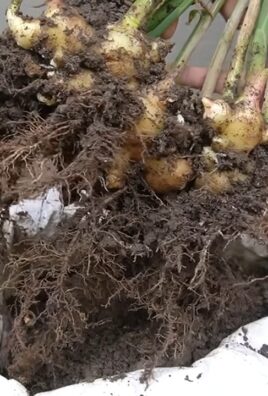
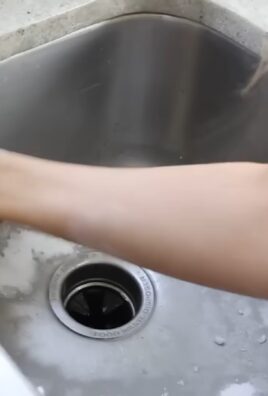
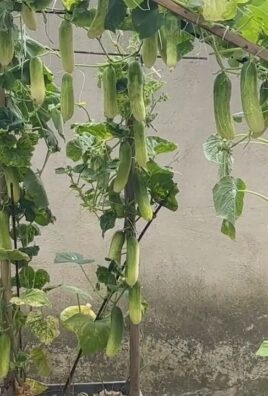
Leave a Comment